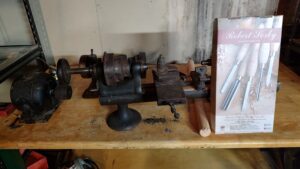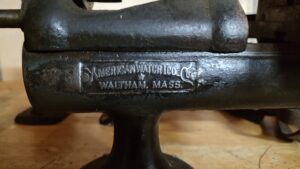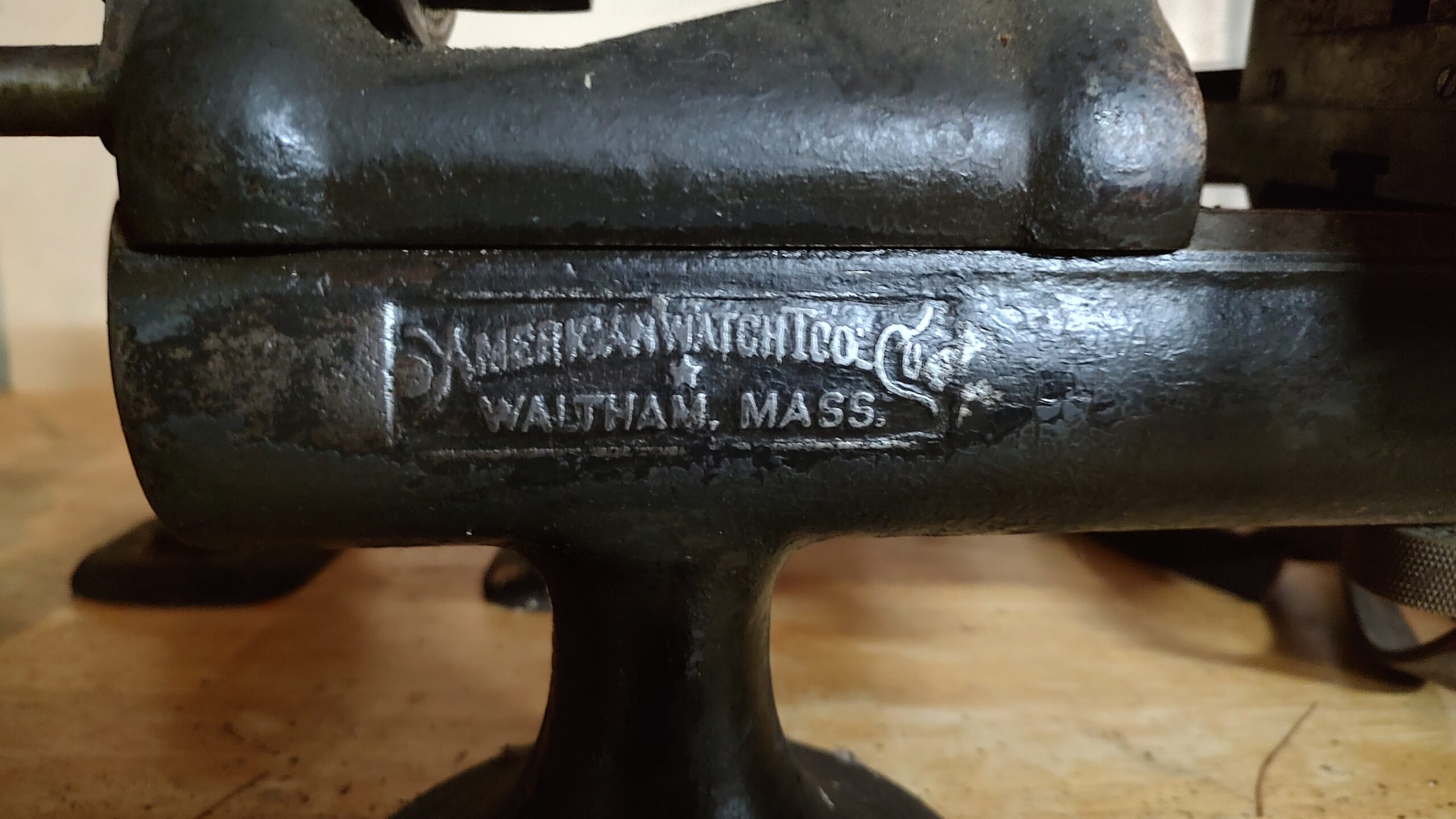
The goal is to make my shop a usable space again. I used to have around 8 square feet of workbench, of which 2+ were taken up with the bench vise.
The wielding table is outside. The hydrologic press is outside. The blast cabinet is outside. Normally, they are under tarps, but that isn’t a long-term solution.
Mind you, the cost of those three tools was about $50 in raw steel.
The shop is really two shops in one. There is the wood shop and there is the metal shop. The wood shop consists of jointer, plainer, table saw, freestanding drill press, shaper, mortising machine, small belt sander and 12-inch disk sander, two vertical bandsaws.
There is 8 sq foot of cabinet top for all of that, 4 square feet of which is taken up by my bench grinder.
The other cabinet is supporting my wood machinist chest.
There are four heavy-duty shelving units. 4x2x6 feet with five shelves each.
Until Thursday, I had access to one full shelf unit, one end of another, and half of a third.
The problem was that there was the CNC router blocking access to most of the shelving units.
In addition to all of that, the shop roof was leaking, no longer, new roof on the house and garage. The leak was dripping on a few of the shelving units. The shelves proper, were made from pressed particleboard. When that stuff gets wet, it fails.
Lucky for me, almost everything was stored in bins, nothing was water damaged except for the shelves.
Friday, I made up new, replacement shelves for one of the units. Half inch A-C plywood. It is stronger and looks so much better.
The CNC router is completely torn down. The MDF used to construct it is gone. The homemade linear bearings have been recycled. The stepper motors put aside. The 3/4 plywood used to support the CNC is now a cover for the table saw. Making that useful space.
Boy, that’s a lot of babbling to get to:
The New Lathe

Because of my work at the Fort at #4, I decided I needed to learn how to turn. I started looking for a cheap wood lathe on Craigslist. Then I remembered, a friend had gifted me a lathe.
I started pulling it out of the corner where it had been shoved. Heavy for a wood lathe. I put it on the new heavy duty work bench. Nice.
Unfortunately, it seemed to have some issues. It is leather belt driven. The one leather belt I had for it was broken. I could lace it back together, but that is only somewhat helpful. I still need a belt from the motor to the counter shaft.
I start tearing it down, liberating it where it requires liberation. The tail stock quill is a joy, it spins easily and moves with no wiggle and no stickiness.
The head stock was a different issue. It took me a bit, but I did get it working again. The caps to the oil cups are missing, something for me to make.
Then I realized that this thing has a collet closer! It is small and dainty. But it works well. I have not verified, but I think it is a 3C collet.
The tool rest was small. Only about two inches long. That is an easy thing to fabricate. (Fabricate is when you are going to build up a single unit from parts, sometimes with wielding, sometimes with rivets.).
I know that I can make a fake collet that has the right angles and thread to have a 1″ by 8 TPI to mount modern wood chucks.
I ordered leather to make the new belt(s), went back to organization stuff.
There on the floor, where the lathe had been, is another chunk of cast iron. I pick it up. It looks like some sort of cross slide.
When I take it to the lathe, it becomes clear that it is a cross slide. It has very limited X movement (left/right) and just enough Y movement (in/out). But here is the cool thing, you can easily dismount it to move it to one of three positions on the ways.
This means it has three times the Y movement as it looks to begin with.
The X movement is also extensible. The entire cross slide can be moved anywhere on the ways.
This is starting to look pretty cool. And the providence says it was in use from the 1920s through the 1950s.
This is a cool little lathe. It is obvious now that it was used to turn wood and such.
As I was writing this article, I decided I wanted a second picture. Using a scotch bright pad, I polished up the name plate.
“American Watch Tool Co. Waltham, Mass.”
This is a watchmaker’s lathe. Something new to learn…

